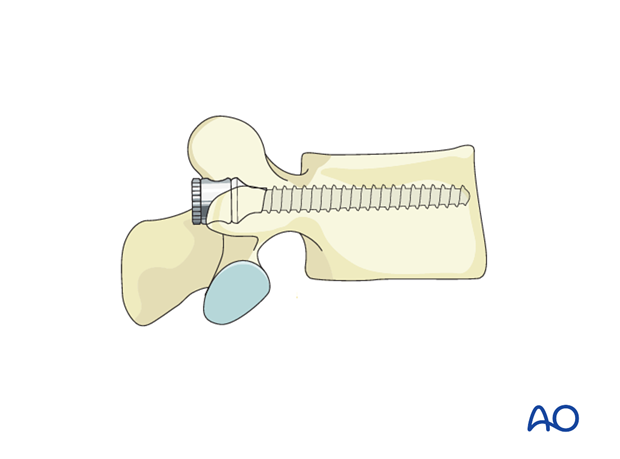Insertion of pedicle screws
1. Pedicle screw entry points
Lumbar spine
The entry point of the pedicle screw is defined as the confluence of any of the four lines:
- Pars interarticularis
- Mamillary process
- Lateral border of the superior articular facet
- Mid transverse process
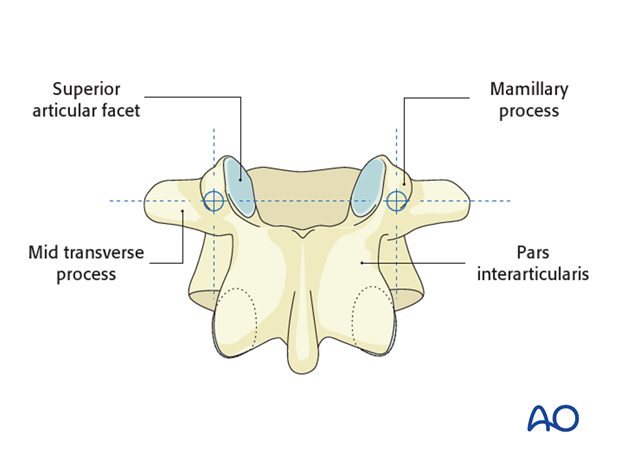
Thoracic spine
The entry point of the pedicle screw for the lower thoracic segments is defined after determining the intersection of the mid portion of the facet joint and the superior edge of the transverse process. The specific entry point will be just lateral and caudal to this intersection.
The entry point tends to be more cephalad as one moves to more proximal thoracic levels.
Landmarks:
- Lateral border of the superior facet
- Lateral border of the inferior facet
- Ridge of the pars interarticularis and the transverse process
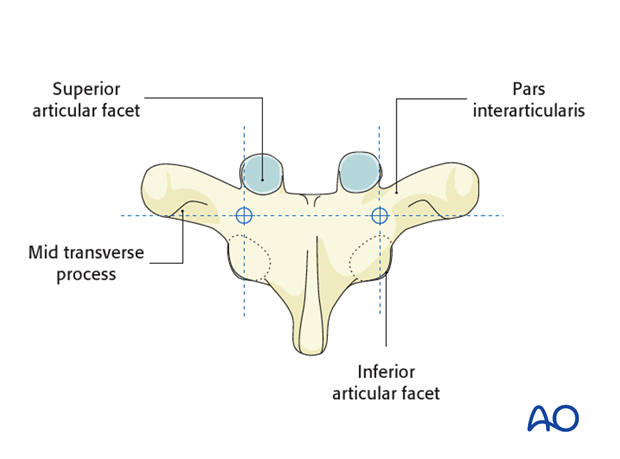
2. Screw insertion
Opening of the cortex
Open the superficial cortex of the entry point with a burr or a rongeur.

Cranial-caudal angulation
A pedicle probe is used to navigate down the isthmus of the pedicle into the vertebral body.
The appropriate trajectory of the pedicle probe in the cranial caudal direction occurs by aiming for the contralateral transverse process.
Thereby paralleling the screws to the superior endplate.
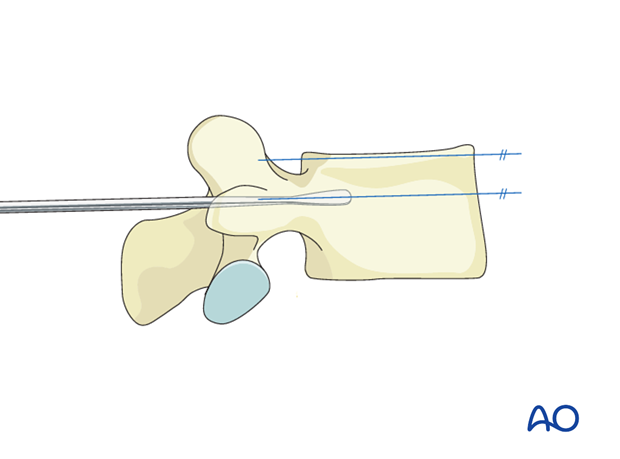
Medio-lateral inclination
The medio-lateral inclination will depend on the rotation of the vertebra. The main goal is to avoid medial penetration of the spinal canal superficially and lateral or anterior penetration of the vertebral body cortex at the depth of insertion. Ideally, the two screws should converge but stay entirely within the cortex of the pedicles and body.
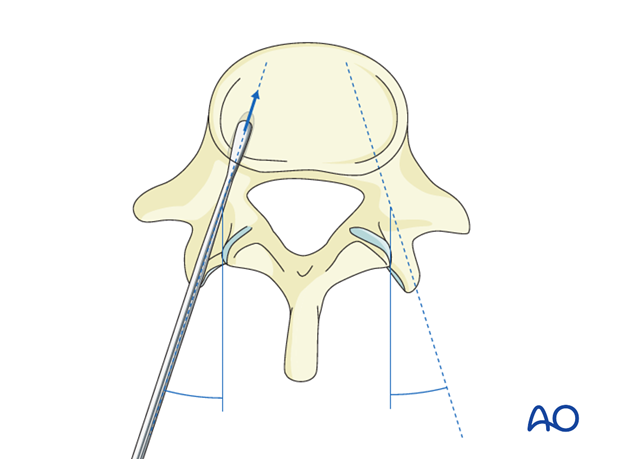
Screw insertion
Once the pedicle track has been created, it is important to confirm a complete intraosseous trajectory by pedicle and body palpation using a pedicle sounding device. At any point in the process, radiographic confirmation can be obtained.
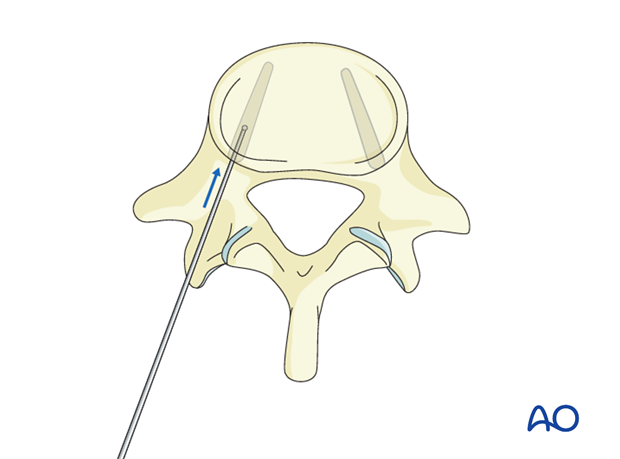
An appropriate diameter and length screw is carefully inserted into the same trajectory created.
